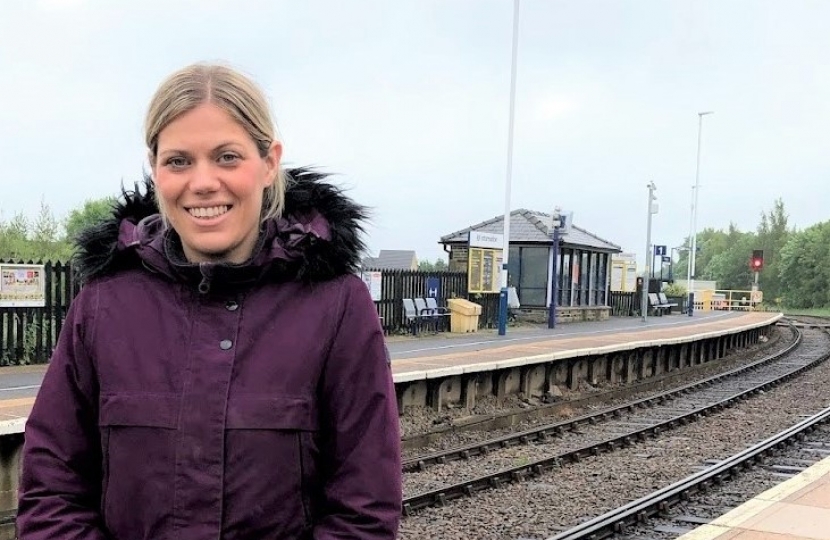
The priority is investment in reliable local public transport
Miriam Cates MP | The Yorkshire Post
I’d like to use this column to do something that politicians don’t normally do. I’m going to publicly admit that I have changed my mind. In this case, I specifically mean that I have changed my mind about HS2.
Until recently, I was satisfied by the argument that South Yorkshire needs HS2 to ‘level up’ by unleashing significant economic growth in our region. A completed HS2 eastern leg would knock half an hour off the time it takes to get from Sheffield to London by train. This argument was bolstered by claims that the public spending required to build HS2 would also bring jobs and opportunities to local people and businesses, and that if Birmingham and Manchester are having something then Sheffield needs to have it too.
These are all appealing and, in some ways, compelling arguments, but unfortunately, in a post-COVID society, the reality just doesn’t add up. Quite simply, as we try to Build Back Better from the pandemic, HS2 has become the wrong answer to the wrong question.
I would be the first to say that we have significant public transport problems in South Yorkshire, and that is the result of decades of underinvestment by successive local and national governments. This is something that I have been campaigning about passionately since before I became an MP, and it’s one of the top issues identified by constituents wherever I go in my constituency.
The problem is that HS2 is not actually going to solve any of them.
Setting aside the ever increasing and multi-billion-pound price tag for the time being, I’d like to examine some of the public transport issues we are facing in South Yorkshire, and why HS2 is not the solution to them.
Firstly - we desperately need better connectivity between the major towns and cities of the North. But HS2 is only going to link Sheffield to London and the “East Midlands Hub”, which is essentially just a car park halfway between Derby and Nottingham. Under current plans we won’t even see high-speed trains to Birmingham or Leeds. HS2 will deliver no improvements to journeys between Sheffield and Manchester, Liverpool, Newcastle, or Hull. Instead, we should prioritise and accelerate the Northern Powerhouse Rail project.
Secondly - the current Sheffield to St Pancras journey is already pretty good and is certainly not in need of being replaced by an entirely new line. I catch the train every time I travel down to Westminster, and a slight improvement to the two-hour journey each way would have little impact on my commute.
Birmingham and Manchester do suffer from a lack of capacity on the route into London, but this is simply not the case for Sheffield. Any improvements to speed and frequency could easily be met by electrifying the existing mainline and investing in new electric trains, which would also help to create a more environmentally-friendly railway.
Thirdly - South Yorkshire has an underdeveloped commuter rail network compared to equivalent city regions in the UK and overseas. Instead of building a new line to London, we could better spend that money by investing in local rail lines to give communities in constituencies like mine a regular and reliable train service. We should also expand our programme of rail re-openings, such as the Stocksbridge to Sheffield line, to bring rail connectivity back to towns and villages that have been without it for decades.
Fourthly - there is a serious lack of station capacity in central Sheffield, and the addition of HS2 services to a station with no room to expand is only going to reduce the already low number of regional and commuter trains that can serve the city. That’s why I’m calling for the reopening of Victoria station as part of my bid to bring back passenger services between Sheffield and Stocksbridge. An additional city centre station will increase capacity for local and commuter services and help to connect more communities with Sheffield and beyond.
It’s also important to recognise that the pandemic has changed the way we live and work. I’m not suggesting that people will never go back to the office or need to travel for business, and I certainly wouldn’t want that to be the case. But now, with the widespread adoption of virtual meetings, it’s difficult to believe that there will be the same level of demand for frequent business travel that there was pre-pandemic, and we should reassess our infrastructure priorities to reflect that. In future there will be a much greater emphasis on local and regional public transport connectivity, and far less need for thousands of high-speed seats travelling down to London every day.
In the context of a huge increase to our national debt as a result of the pandemic, an ambitious and comprehensive programme of rail upgrades and investment across the North would be a far better way to spend billions of pounds of taxpayers’ money. It would still help to deliver new jobs and opportunities for businesses, and local suppliers and factories could be prioritised for procurement.
It’s absolutely right to be investing in transport infrastructure, but we have to do it in a way that will deliver the best possible value and the greatest possible benefits.
The best way to reinvigorate our towns and villages is to connect them to the national rail network and give local people the reliable and convenient public transport links that they need. After all, it’s no use being able to get from Sheffield to London 30 minutes quicker if it still takes nearly an hour just to get from Penistone to Sheffield.




